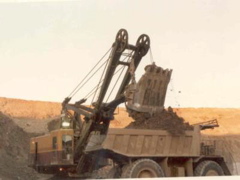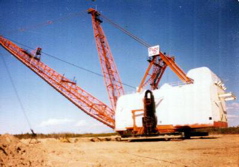Want to go and visit Pine Point? Well, you really can't go there anymore because it no longer exists. But at one time it use to be a bustling town not far from the edge of Great Slave Lake NWT. Now the only evidence left of this once-bustling town is a cemetery and a few paved streets.
Prospectors heading along the Great Slave Mackenzie route to the Klondike in 1898 met a party of Dene, who had musket balls and fishing weights made from local metal. A staking rush developed in the winter of 1898 based on the belief that the mineralization carried high values of gold and silver.
It was in the dead of night that dog teams carrying gold seekers left Fort Resolution NWT. They were tracked by many others including missionaries and traders and soon the area was staked far and wide, for the good of the Church and for private gain. But there was disappointment the following summer after the receipt of the first accurate assays revealed the deposits were lead and zinc and had no precious metal values. Although many claims were staked that year, but it would be 67 years before the mine became a reality.
Pine Point was one of Canada's most profitable lead-zinc mines ever. Production started in 1964 by Pine Point Mines Ltd. (controlled and operated by Cominco). Pine Point was an open-pit operation extracting ore from at least thirty-six separate pits. The processing plant produced separate lead concentrate (assaying about 75 percent lead) and zinc concentrate (about 57 percent zinc). The concentrates were shipped on rail to the Cominco smelter at Trail BC, Japan and the United States.
From 1962 and 1965 a railway was built to support the mining operation. It was the only railway in the Northwest Territories. It went from Peace River Alberta, to Pine Point. At about the same time the Taltson hydro electric station was built to supply power at Elsi Falls on the Taltson River about 270 kilometers to the east of Pine Point.
At its peak, the population of Pine Point was nearly 2000. about 650 of those people worked at the mine. In all nearly 70 million tons of ore were produced, but by 1988 the deposits of ore were too costly to mine. The town was dismantled and the site was reclaimed.
Today again Pine Point is being looked at with new eyes. Tamberlane Ventures is looking at putting Canada's world class zinc lead Pine Point Properties back into production.


